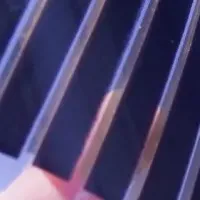
Innovative Hydro-to-Cathode Process Cuts Battery Recycling Emissions by Nearly Half
Revolutionary Shift in Battery Recycling: Ascend Elements' Hydro-to-Cathode® Process
In a landmark study, Ascend Elements has unveiled its Hydro-to-Cathode® direct production method that offers a remarkable solution for reducing the environmental footprint associated with battery recycling. A recently published, independently reviewed Life Cycle Assessment (LCA) highlights that this innovative process results in nearly a 50% reduction in carbon dioxide equivalent (CO2e) emissions while also decreasing particulate matter emissions by 26% when compared to traditional battery recycling methodologies.
The data, gathered rigorously following ISO standards, positions Ascend Elements at the forefront of sustainable battery recycling and manufacturing. The findings suggest that not only is their approach cleaner than conventional techniques, but it is also paving the way for further advancements in environmental sustainability within the battery industry. The company's ambitious goal for 2030 is to achieve an astounding 86% reduction in CO2e emissions and a 94% drop in PM 2.5 emissions.
Details from the Life Cycle Assessment
The life cycle assessment conducted by Minviro, in collaboration with a panel of independent experts, evaluated Ascend Elements’ NMC 9.5.5 pCAM product. The results are striking: traditional methods of recycling were significantly less efficient, producing excess greenhouse gases and particulates harmful to the environment and public health.
To summarize some of the key findings:
- - 49% Reduction in CO2e Emissions: The Hydro-to-Cathode process emits significantly less CO2 equivalent compared to older recycling technologies.
- - 26% Reduction in PM 2.5 Emissions: The reduction in harmful particulate emissions from the new process further underscores its environmental advantage.
Additionally, the study examined how the Hydro-to-Cathode® process recovers lithium from used batteries and manufacturing waste, revealing even lower emissions during the lithium carbonate (Li2CO3) production process. For instance, producing 1 kg of lithium carbonate through this innovative method emits only 2.3 kg of CO2e—86% less than emissions from traditional spodumene mining and also showing lower impacts compared to the extraction from Chilean brine.
Future Goals and Facilities
Ascend Elements continues to push boundaries with strategic initiatives designed to enhance sustainability in their operations. With plans to utilize 100% renewable energy for all their recycling and manufacturing processes, as well as leveraging rail transportation to reduce carbon footprints, their commitment to ecological innovation is evident.
The company operates one of North America’s largest battery recycling facilities located in Covington, Georgia, and is in the process of establishing a new lithium recovery line, aiming to produce an impressive 3,000 metric tons of sustainable lithium carbonate annually. Furthermore, Ascend Elements is set to build an advanced Hydro-to-Cathode® pCAM facility in Hopkinsville, Kentucky, which will manufacture engineered battery materials capable of supporting 750,000 electric vehicle batteries each year, that is projected to become the largest of its kind in North America upon completion in late 2026.
Conclusion
With the world moving increasingly towards electric vehicles and sustainable technology, the adoption of innovative processes like Ascend Elements’ Hydro-to-Cathode® synthesis is crucial. As the data from the life cycle assessment illustrates, not only does this technology offer a cleaner alternative for recycling battery materials but it also sets a precedent for future advancements in efficiency and sustainability within the industry. Ascend Elements offers a crucial step forward in addressing the environmental challenges faced by conventional battery recycling methods and embodies the potential for a transformative future in battery technology and recycling practices.
Topics Energy)










【About Using Articles】
You can freely use the title and article content by linking to the page where the article is posted.
※ Images cannot be used.
【About Links】
Links are free to use.